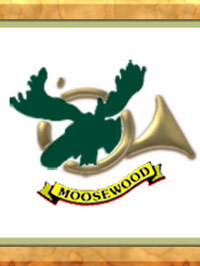Since I’ve started this website, I’ve been slowly (very slowly) trying to write down exercises and other materials for my students and other horn players to use.
While I was doing this I quickly realized that trying to do it by hand wasn’t going to work – my handwriting is not great, and so writing these exercises out (or making copies of previously-written exercises) was not going to work in the long run.
So I spent a week (or few, it was summer!) looking into different music notation programs. My goal was something that was flexible and not too difficult to use.
My use case was only writing a single line of music with only a moderate amount of markings (as opposed to a full symphonic score), but I did have some specific requirements (ability to add text to a score, hiding measure lines, etc.) that kept me looking around.
Since I’ve had a few students express curiosity about writing music, I figured this quick compilation of some of the best music-writing software I could find may be useful. If you’ve got a recommendation that I didn’t cover, please let me know in the comments!
The Big Two: Finale and Sibelius
Whenever anyone mentions music notation, the first thought is often either one (or both) of these two programs. They’ve been around a long time and both have stood the test of time. For my use, though, Finale and Sibelius are too expensive to buy the full versions and too limited in the less-expensive versions for me to spend much time on them.
Don’t get me wrong, these are both great programs, and if you’re serious about composing you should give them both a shot.
They both offer free versions (Finale Notepad and Sibelius First) that can be a useful way to see which software suite you prefer. I don’t know enough about the differences to say much more, but basically, the way you enter notes and rests is different for each program, and once you become familiar with the note-entry method, switching to the other software becomes a pain.
You’ll want to try them both out, since if (or when) you get the full version, it’s going to cost you! The full version of both costs several hundred dollars, although Sibelius has the option of a monthly subscription if you only need to write music for a month or two. You can buy a lifetime Sibelius license though, which is nice. The cost of the Finale full version and Sibelius lifetime license is basically the same ($600). They also both offer student and education discounts.
A point on the Sibelius license: Sibelius has gone to the AdobeCC/Microsoft Office model of a monthly subscription (or a lifetime license) which means that Sibelius, in theory, should be receiving updates and upgrades more often than Finale. I don’t know if it will (or even if this is a pro or con) but that is another big difference between the two.
The Open-Source Option: MuseScore
If you’re looking to save money, need lots of flexibility and don’t mind a learning curve, there is an open-source free option, called MuseScore that is worth investigating.
MuseScore has gone through several updates over the past 3 years to make it a bit easier to use and a bit more feature-complete (in my experience, it’s probably around 80-90% of the capability of Finale/Sibelius). Remember, though, that my use case is not necessarily typical!
MuseScore is what I used to make all my exercises that you can find over on my horn exercises page and it wasn’t always intuitive. I could do most of what I wanted after some trial and error (and Googling).
But the really great part about MuseScore is its cost (free), its features (lots), and it’s availability across just about every platform (Windows, macOS, Linux, Android, iOS). The Android and iOS apps are a bit misleading, however, since you can’t actually edit music (only view it) on both of the mobile platform apps.
Really, if you’re at all interested in writing music, I think you should start with MuseScore. If you learn it’s quirks and like it, you can do just about everything you’ll ever need and save quite a bit of money (and a don’t think the learning curve is less than Finale or Sibelius, just different). If you try MuseScore and hate it, then you should move on to one of the other paid options.
The Online Option: Flat.IO
There is one negative to all these options, though. They all require a “real” computer. Whether Windows, Mac, or Linux, you can’t use these options on a tablet, iPad, or other non-computer devices.
Since I’ve been using my Chromebook a bit, though, and the Android version of MuseScore is basically useless, I was looking for something that might allow some quick-and-dirty music writing online, and I got a recommendation for Flat.io from several different members of my brass quintet.
Flat.io is music notation software that is web-based (although offline editing is possible) and allows for creating and collaborating on music scores
I’ve tried it a little bit over the past few days, and it seems to be a pretty decent replacement for messing around with (moderately) simple scores. It has a decently robust free demo option that allows up to 15 scores, collaboration options, MusicXML import/export, printable scores (with Flat.io branding), and the ability to transcribe with MIDI devices.
For a moderate fee (compared to something like Finale or Sibelius) you can get much more functionality, including unlimited scores, lots of other print and export options, more advanced layouts, revision history, and lots of other features. The paid version of Flat.io costs either $6.99/mo, $49/year, or a one-time $149 payment.
In general, Flat.io is much more simple than the three programs I’ve already mentioned, but for some people, that simplicity will be a big asset. Because there aren’t hundreds of different formatting options, it’s pretty easy to get your ideas down quickly with all the appropriate markings (dynamics, articulation, ornaments, text, etc.). However, if you’re doing lots of 20th-century music with various extended techniques or want very specific formatting, it may not work.
Miss Anything?
So those are the four major players that I’ve found if you’re looking to write music.
I think these cover basically every price point and operating system (although you can’t do much from either an Android or Apple phone) that people are likely to have.
If you’ve got any questions or if I missed anything, please let me know in the comments below!





